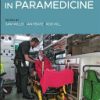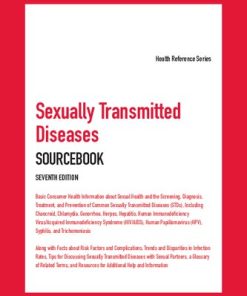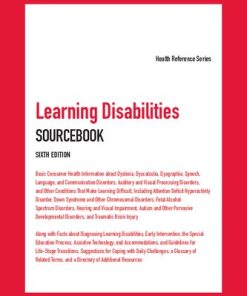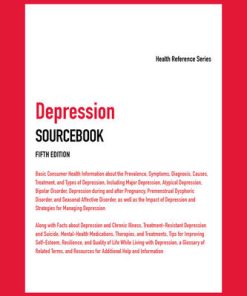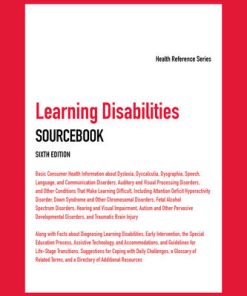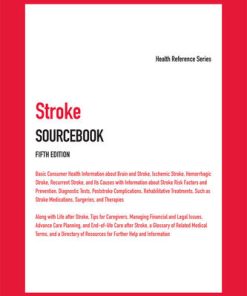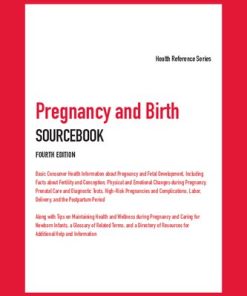Contagious Diseases Sourcebook 1st edition by Angela Williams 0780816787 9780780816787
$50.00 Original price was: $50.00.$25.00Current price is: $25.00.
Contagious Diseases Sourcebook 1st edition by Angela L. Williams – Ebook PDF Instant Download/DeliveryISBN: 0780816787, 9780780816787
Full download Contagious Diseases Sourcebook 1st edition after payment.
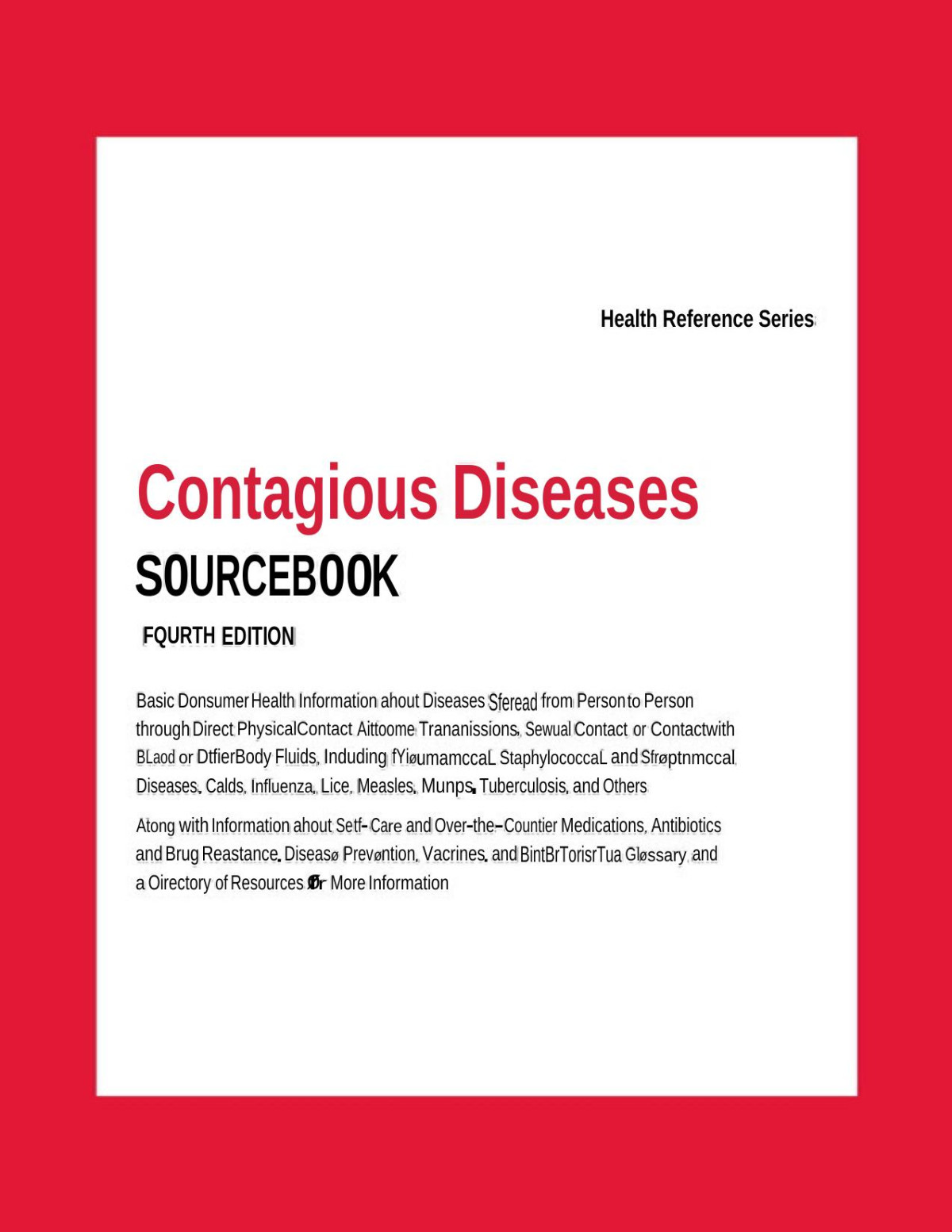
Product details:
ISBN-10 : 0780816787
ISBN-13 : 9780780816787
Author : Angela L. Williams
Provides consumer health information about symptoms, diagnosis, and treatment of Alzheimer disease and other dementias, along with tips for coping with memory loss and related complications and advice for caregivers. Includes index, glossary of related terms, directory of resources.
Contagious Diseases Sourcebook 1st Table of contents:
Part One—Facts about the Brain and Cognitive Decline
Chapter 1—The Basics of a Healthy Brain
Chapter 2—The Changing Brain in Healthy Aging
Chapter 3—Understanding Memory Loss
Chapter 4—What Is Dementia?
Chapter 5—Dementia: Causes and Risk Factors
Chapter 6—Statistics on Dementia Prevalence and Mortality
Chapter 7—National Plan to Address Alzheimer Disease: 2017 Update
Part Two—Alzheimer Disease: The Most Common Type of Dementia
Chapter 8—Facts about Alzheimer Disease
Chapter 9—What Happens to the Brain in Alzheimer Disease
Chapter 10—Signs and Symptoms of Alzheimer Disease
Chapter 11—The Connection between Alzheimer Disease and Genes
Chapter 12—Clinical Stages of Alzheimer Disease
Chapter 13—Early-Onset Alzheimer Disease
Chapter 14—The Genetics of Alzheimer Disease
Section 14.1—Alzheimer Disease Genetics Fact Sheet
Section 14.2—Gene Linked to Alzheimer Disease Plays Key Role in Cell Survival
Section 14.3—Genetic Risk Variants Linked to Alzheimer Disease Amyloid Brain Changes
Chapter 15—Health Conditions Linked to Alzheimer Disease
Section 15.1—Down Syndrome and Alzheimer Disease
Section 15.2—Obesity May Raise Risk of Alzheimer Disease and Dementia
Section 15.3—Diabetes, Dementia, and Alzheimer Disease
Chapter 16—Traumatic Brain Injury, Alzheimer Disease, and Dementia
Chapter 17—Other Factors That Influence Alzheimer Disease Risk
Section 17.1—Alcohol Use and the Risk of Developing Alzheimer Disease
Section 17.2—Effects of Nicotine on Cognitive Function
Section 17.3—Heart Health
Section 17.4—Sleep Deprivation Increases Alzheimer Disease Protein
Section 17.5—Decade after Menopause Poses Highest Risk of Alzheimer Disease for Women with ApoE4 G
Section 17.6—Connection between Hearing and Cognitive Health
Part Three—Other Dementia Disorders
Chapter 18—Cognitive Impairment
Chapter 19—Degenerative Neurological Disease
Section 19.1—Corticobasal Degeneration
Section 19.2—Dementia with Lewy Bodies
Section 19.3—Frontotemporal Dementia
Section 19.4—Huntington Disease
Section 19.5—Parkinson Disease
Chapter 20—Vascular Dementia
Section 20.1—What Is Vascular Dementia?
Section 20.2—Binswanger Disease (Subcortical Vascular Dementia)
Section 20.3—Cerebral Autosomal Dominant Arteriopathy with Subcortical Infarcts and Leukoencephalo
Section 20.4—Multi-Infarct Dementia
Chapter 21—Dementia Caused by Infection
Section 21.1—Creutzfeldt-Jakob Disease
Section 21.2—Acquired Immunodeficiency Syndrome Dementia Complex
Chapter 22—Other Health Conditions That Cause Dementia
Section 22.1—Cancer, Delirium, and Dementia
Section 22.2—Dementia: A Symptom of Normal Pressure Hydrocephalus
Part Four—Recognizing, Diagnosing, and Treating Symptoms of Alzheimer Disease and Dementias
Chapter 23—Forgetfulness: Knowing When to Ask for Help
Chapter 24—Talking with Your Doctor
Chapter 25—Diagnosing Alzheimer Disease
Section 25.1—How Is Alzheimer Disease Diagnosed?
Section 25.2—Alzheimer Disease Diagnostic Guidelines
Chapter 26—Testing for Alzheimer Disease
Section 26.1—Test for Assessing Cognitive Impairment
Section 26.2—Positron Emission Tomography and Single Photon Emission Computed Tomography
Section 26.3—Magnetic Resonance Imaging
Section 26.4—Biomarker Testing for Alzheimer Disease
Chapter 27—Medications for Alzheimer Disease
Chapter 28—Participating in Alzheimer Disease Clinical Trials and Studies
Chapter 29—Can Alzheimer Disease Be Prevented?
Chapter 30—Recent Alzheimer Disease Research
Section 30.1—Researchers Map How Alzheimer Disease Pathology Spreads across Brain Networks
Section 30.2—NIH-Funded Study Finds New Evidence That Viruses May Play a Role in Alzheimer Disease
Section 30.3—Lack of Sleep May Be Linked to Risk Factor for Alzheimer Disease
Section 30.4—Clearing Senescent Cells from the Brain in Mice Preserves Cognition
Section 30.5—Higher Brain Glucose Levels May Mean More Severe Alzheimer Disease
Section 30.6—Blood, Brain Metabolites Could Be Earlier Biomarkers of Alzheimer Disease
Part Five—Living with Alzheimer Disease and Dementias
Chapter 31—Talking about Your Diagnosis
Section 31.1—Telling Others about an Alzheimer Disease Diagnosis
Section 31.2—Talking to Children about Alzheimer Disease
Chapter 32—Getting Support for Alzheimer Disease and Dementia
Chapter 33—Preventing Cognitive Decline If You Have Alzheimer Disease or Dementia
Chapter 34—Nutrition, Exercise, and Therapeutic Recommendations
Section 34.1—Questions and Answers about Alzheimer Disease Prevention
Section 34.2—Healthy Eating and Alzheimer Disease
Section 34.3—Physical Activity Benefits Nursing-Home Residents with Alzheimer Disease
Section 34.4—Dance Your Way to Better Brain Health
Section 34.5—Complementary Health Approaches for Alzheimer Disease and Dementia
Chapter 35—Medications’ Effects on Older Adults’ Brain Functions
Chapter 36—Common Medical Problems in People with Alzheimer Disease
Chapter 37—Alzheimer Disease and Hallucinations, Delusions, and Paranoia
Chapter 38—Pain and Dementia
Chapter 39—Sexuality and Alzheimer Disease
Chapter 40—Managing Sleep Problems in Alzheimer Disease
Chapter 41—Driving Safety and Alzheimer Disease
Chapter 42—Living Alone with Alzheimer Disease or Dementia
Chapter 43—Financial Concerns and Alzheimer Disease
Chapter 44—Medicare and Alzheimer Disease
Chapter 45—Getting Your Affairs in Order
Section 45.1—Planning for the Future
Section 45.2—Legal and Healthcare Planning Document
Section 45.3—Healthcare Decisions at the End of Life
Part Six—Caregiver Concerns
Chapter 46—Caring for a Person with Alzheimer Disease or Dementia
Chapter 47—Helping Family Members and Others Understand Alzheimer Disease
Chapter 48—Long-Distance Caregiving
Chapter 49—Coping with Challenging Behaviors
Section 49.1—Personality and Behavior Changes in Alzheimer Disease
Section 49.2—Agitation and Aggression in Alzheimer Disease
Section 49.3—When a Person with Alzheimer Disease Rummages and Hides Things
Section 49.4—Coping with Sundowning
Chapter 50—Coping with Late-Stage Alzheimer Disease
Chapter 51—Techniques for Communicating with Someone with Alzheimer Disease
Chapter 52—Planning the Day for Someone with Dementia
Chapter 53—Safety Issues for People with Alzheimer Disease
Section 53.1—Safety at Home
Section 53.2—Using Medicines Safely
Section 53.3—Wandering
Section 53.4—Disaster Preparedness for Patients with Alzheimer Disease Caregivers
Section 53.5—Understanding Elder Abuse
Chapter 54—Dementia, Caregiving, and Controlling Frustration
Chapter 55—Respite Care: Giving Caregivers a Break
Chapter 56—Residential Facilities, Assisted Living, and Nursing Homes
Chapter 57—Choosing a Nursing Home
Chapter 58—Hospitalization and Alzheimer Disease
Chapter 59—Making Decisions about Resuscitation and Tube Feeding
Chapter 60—Caring for Someone near the End of Life
Chapter 61—What Happens When Someone Dies
Part Seven—Additional Help and Information
Chapter 62—Glossary of Terms Related to Alzheimer Disease and Dementia
Chapter 63—Directory of Resources for People with Dementia and Their Caregivers
People also search for Contagious Diseases Sourcebook 1st:
contagious diseases facts
contagious diseases by touch
contagious diseases list
communicable diseases book free download
contagious diseases and conditions such as
Tags: Contagious Diseases, Sourcebook, Angela Williams, symptoms, diagnosis
You may also like…
Medicine - Infectious diseases
Sexually Transmitted Diseases Sourcebook 7th Edition Angela L. Williams
Education Studies & Teaching - School Education & Teaching
Learning Disabilities Sourcebook 6th Edition Angela L. Williams
Medicine - Cardiology
Relationships & Lifestyle - Diet & Nutrition
Uncategorized
Relationships & Lifestyle - Health - Diseases & Disorders


